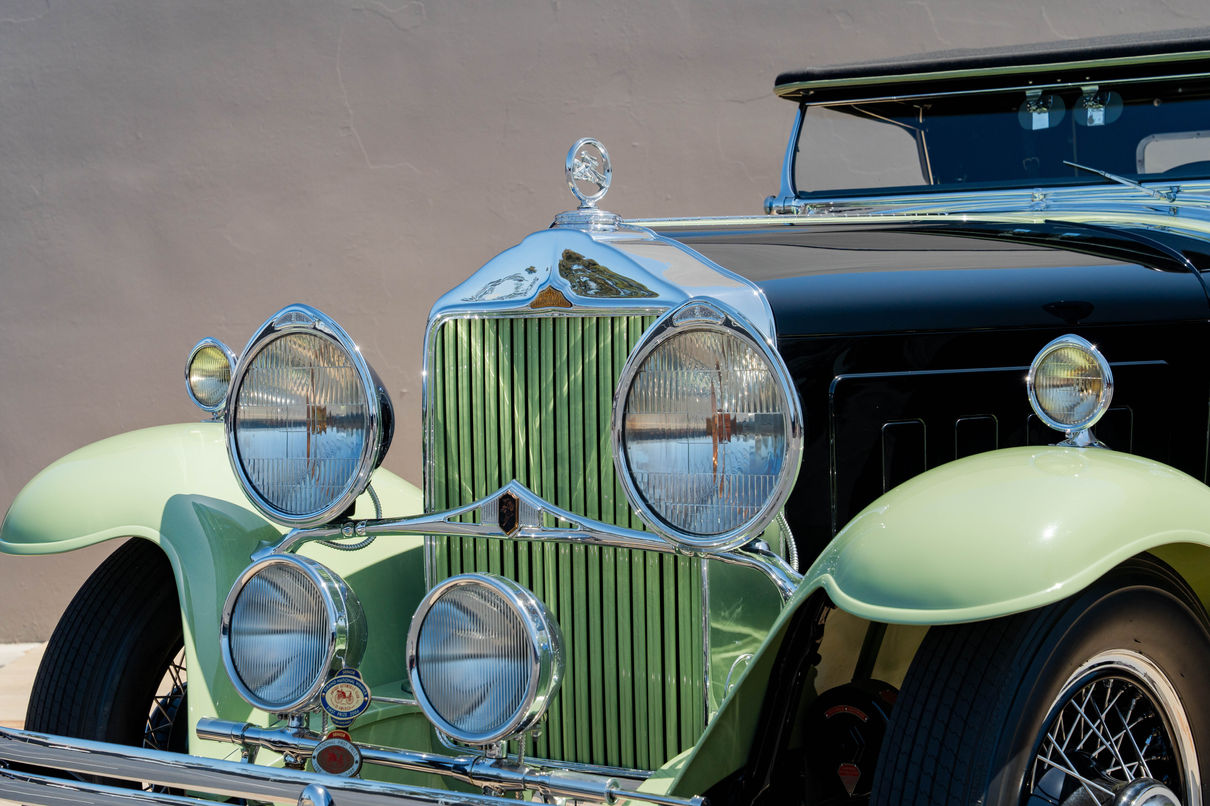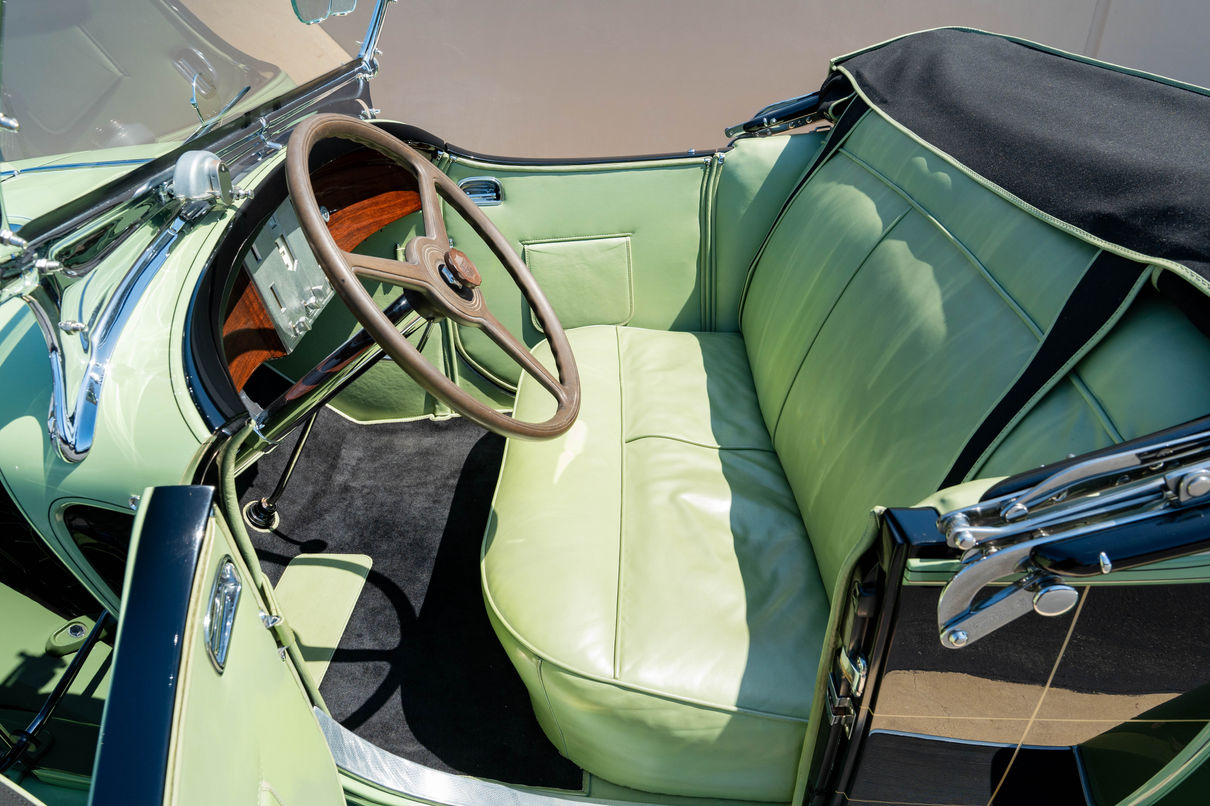Scroll down for description and more information
Click the main photo to enlarge
1930 Willys-Knight 66B ‘Great Six Plaidside Roadster’
1930 Willys-Knight 66B ‘Great Six Plaidside Roadster’
Coachwork by Griswold Motor Body Company
Engine - 255 cubic-inch inline six sleeve-valve
Transmission - Three-speed manual
Horsepower - 87
Production - about 400 of all body styles, less than 11 exist today
“The most distinctive and luxurious Willys-Knight ever designed”
Although not commonly recognized today, in the early teens Willys was a household name when it came to automobile manufacturers, achieving sales numbers second to Ford Motor Company by 1913. Around that time, John North Willys met Charles Knight in Europe. Knight had invented an engine with sleeves around the pistons that acted as valves in place of the common poppet-style valve design. Although Willys wasn’t an engineer by any definition, he was a salesman, and he recognized the potential for promotional advertising surrounding the “patented” sleeve-valve design, given their quiet operation and lesser amount of parts.
Willys-Knight was a mid-range automobile, priced at $1850 when new, but that didn’t stop John North Willys from creating a flagship model on the car bearing his namesake. It was introduced in 1929 at the New York Auto Salon and wore custom coachwork produced by Griswold Motor Body Company. The design was done by Amos Northup, most known for the design of the Reo Royale. The distinctive grid paint scheme on the roadsters and phaetons were an immediate hit, causing the New York press to coin the term “Plaidside” and it stuck from that point on.
The early history of this Great Six Roadster is unknown at this time, but it does date back to the 1960s when it was owned by James Brucker Sr. and his son. Based in Hollywood, Brucker began collecting cars in 1954 and quickly realized the demand from movie production studios to use his cars in films. Through the 1950s they acquired hundreds of cars and eventually relocated their collection to Buena Park, California, where they erected a large building on a plot of land to create “Movieworld-Cars of the Stars”. Movieworld became a treasure trove of autos and movie memorabilia for years to come until the collection was dispersed in 1985.




















